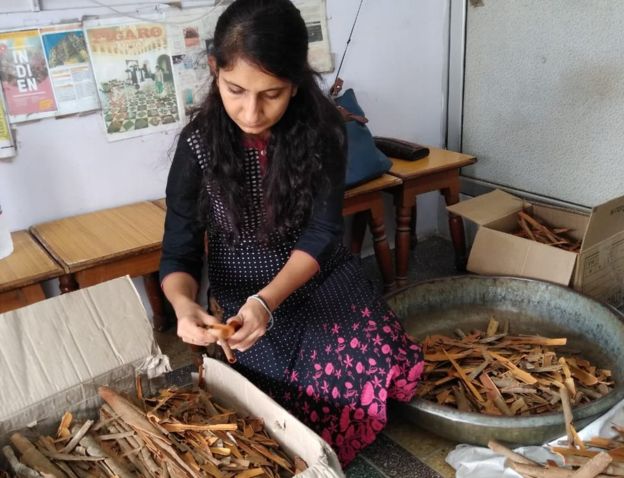What role can technology play in the ancient art of mixing spices?
Hi, Habr! I present to you the translation of the article "AI and spices: Would you put on a pizza?" By Dhruti Shah.
What is common between Tuscan chicken, bourbon steak and New Orleans sausage?
All of them represent the new flavors of spices, developed by the world's largest firm of spices using artificial intelligence.
')

Shot from the movie "Princess of Spice"
McCormick, which not only sells spices, but also develops flavors for the food industry, in collaboration with IBM Research, spent four years dealing with more than 40-year spices-related data. Using machine learning, the company's specialists came up with new combinations of tastes, which previously could not be taken into account by scientists. The artificial intelligence system was trained on raw ingredients, condiment formulas, sales, trend forecasts, and consumer product tests.
Hamed Faridi, chief scientist at McCormick, said that using AI reduces product development time and that the company plans to use this technology to develop all new products by the end of 2021.
Company developers, most of whom are dietary scientists, chemists, chemical engineers, or cooks by training, usually start creating a new product with a basic recipe, such as gravy or mustard, which is called the initial formula.
When using AI, the recipe developer still defines the initial formula and can set some parameters for ingredients that should not be replaced in the recipe. The system will offer new formulas that McCormick product developers can refine and try, and then be sent to consumer testing (and may eventually turn into real products).

Nilam Verhomal uses traditional methods to mix spices in his spice shop in India.
Neilam Verhomal runs the Spice Mohanlal Equoman (MV) firm in Jodhpur, northern India, with his mother and six sisters. She laughed when she heard about an algorithm capable of creating new spices.
What is common between Tuscan chicken, bourbon steak and New Orleans sausage?
All of them represent the new flavors of spices, developed by the world's largest firm of spices using artificial intelligence.
')

Shot from the movie "Princess of Spice"
McCormick, which not only sells spices, but also develops flavors for the food industry, in collaboration with IBM Research, spent four years dealing with more than 40-year spices-related data. Using machine learning, the company's specialists came up with new combinations of tastes, which previously could not be taken into account by scientists. The artificial intelligence system was trained on raw ingredients, condiment formulas, sales, trend forecasts, and consumer product tests.
Hamed Faridi, chief scientist at McCormick, said that using AI reduces product development time and that the company plans to use this technology to develop all new products by the end of 2021.
Company developers, most of whom are dietary scientists, chemists, chemical engineers, or cooks by training, usually start creating a new product with a basic recipe, such as gravy or mustard, which is called the initial formula.
When using AI, the recipe developer still defines the initial formula and can set some parameters for ingredients that should not be replaced in the recipe. The system will offer new formulas that McCormick product developers can refine and try, and then be sent to consumer testing (and may eventually turn into real products).
“So far, AI has led to some combinations of tastes that people would not otherwise have considered because of cultural prejudices about who would like the taste.” - said Richard Goodwin, the main researcher of IBM. “For example, one developer worked on a recipe for making pizza seasonings, and the AI suggested adding cumin, although this is not the norm for spice pizza. Following the advice of the AI developer was surprised to note the excellent flavor combination. "But some traditional spice manufacturers were skeptical of this kind of innovation.

Nilam Verhomal uses traditional methods to mix spices in his spice shop in India.
Neilam Verhomal runs the Spice Mohanlal Equoman (MV) firm in Jodhpur, northern India, with his mother and six sisters. She laughed when she heard about an algorithm capable of creating new spices.
“My late father Mohanlal was a scientist and inventor, and he actually tested every spice and its chemical composition to make a masala spice mix,” she says. "My mother tested the taste of spices at home — and that was of great importance."Her family’s mixtures contain no preservatives or flavor enhancers and are manufactured using traditional grinding methods, and the head matriarch Bhagwanti observes the process and makes the final verdict.
Source: https://habr.com/ru/post/447192/
All Articles